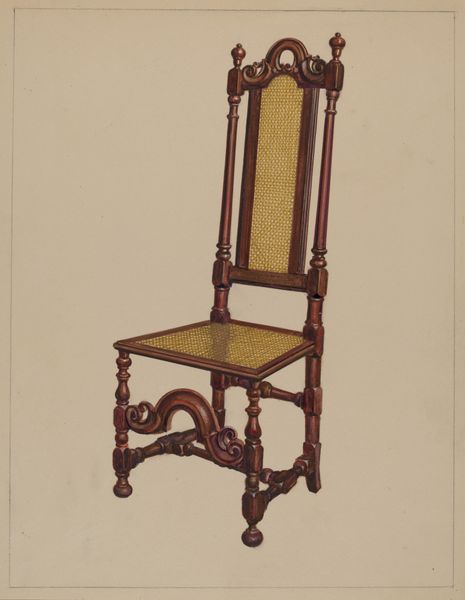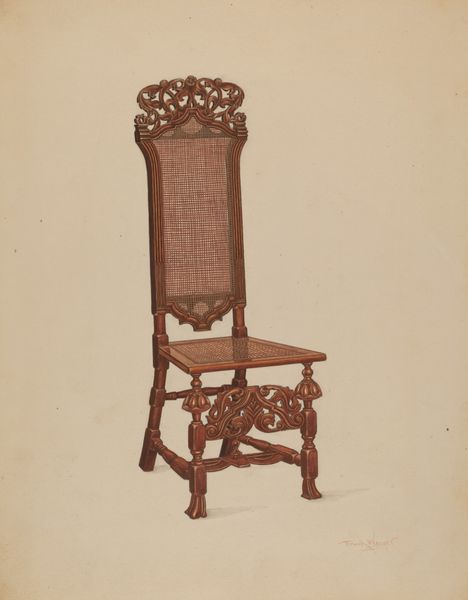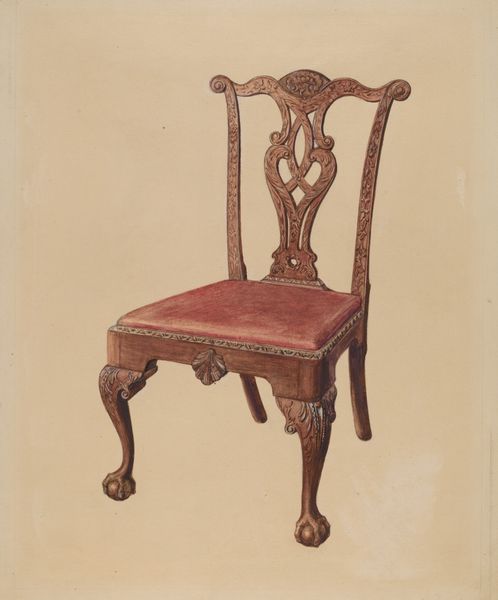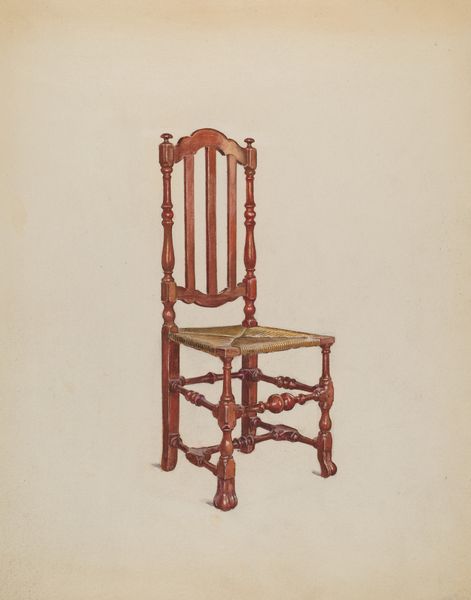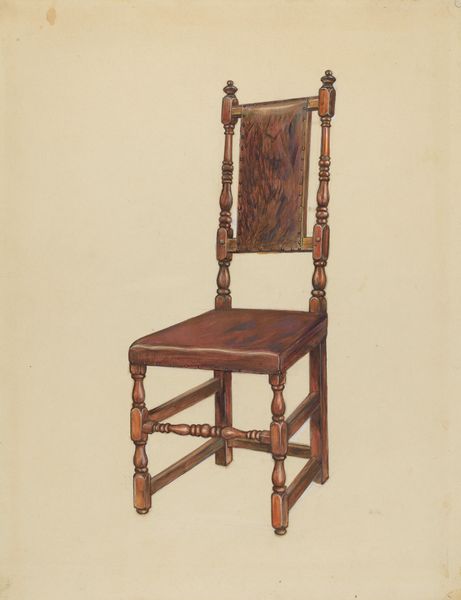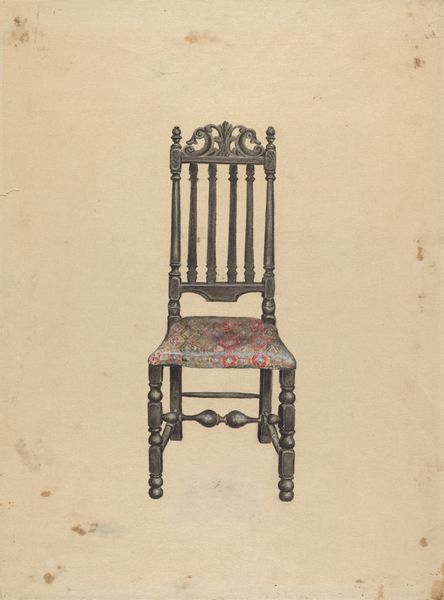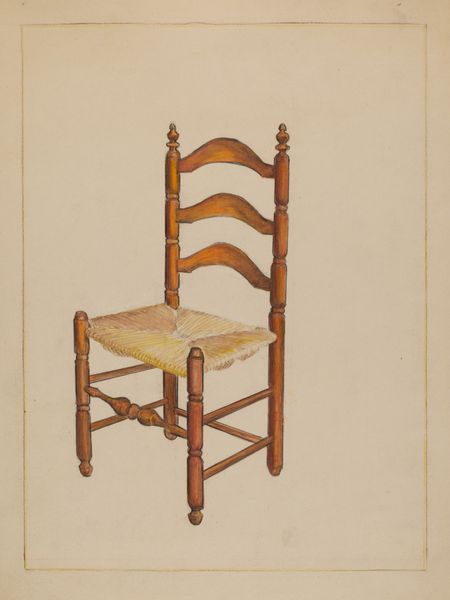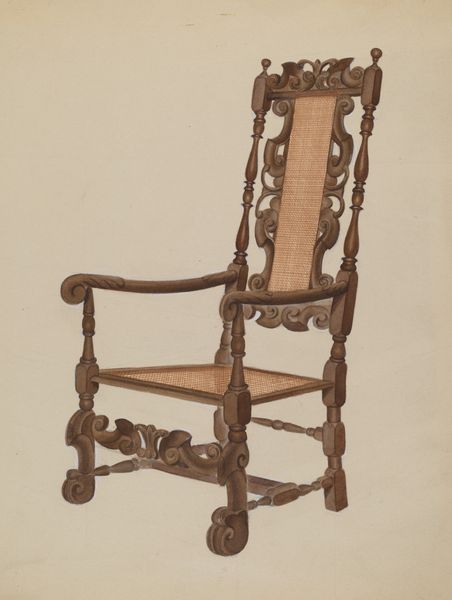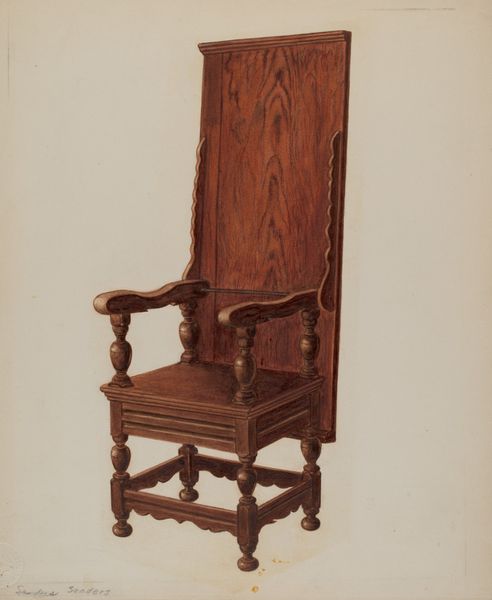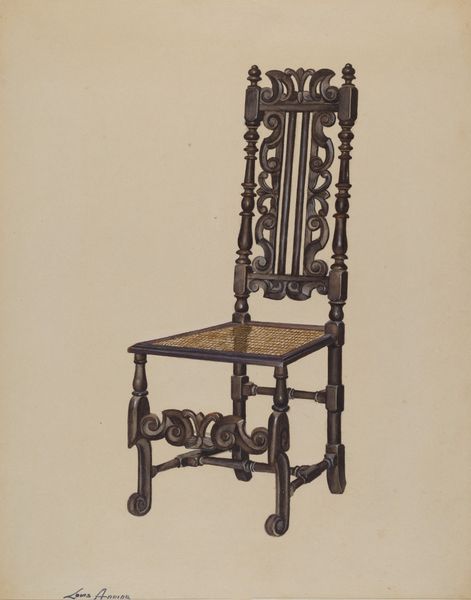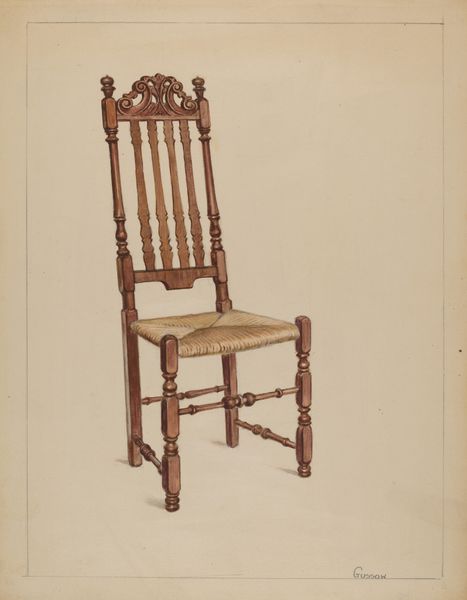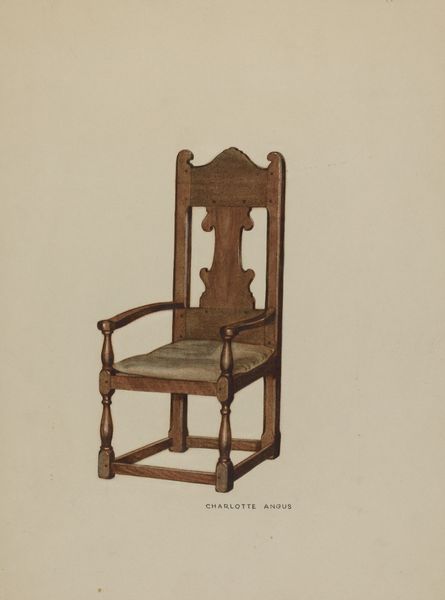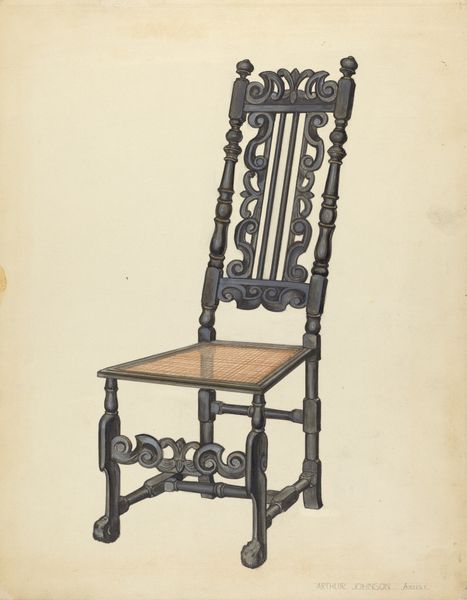
drawing, coloured-pencil
#
drawing
#
coloured-pencil
#
charcoal drawing
#
coloured pencil
#
academic-art
Dimensions: overall: 29.3 x 23.1 cm (11 9/16 x 9 1/8 in.) Original IAD Object: none given.
Copyright: National Gallery of Art: CC0 1.0
Curator: The visual details are immediately striking—it looks both delicate and ornate, yet the rendering lacks precision. Editor: Today, we’re exploring a work titled "Armchair," rendered around 1936 by Agnes Karlin. The piece employs coloured pencil, a somewhat unusual choice that invites speculation on artistic intent. Curator: I see how the material softness enhances the wood-like texture; observe the swirls and carvings rendered on the arms and legs that bring forth notions of traditional craftsmanship and high-class lifestyle. One wonders who was meant to sit there? Editor: Exactly. The choice of medium might reflect the availability of resources during the period or the specific aesthetic Karlin aimed for, bridging craft with art while considering constraints like mass-production. The contrast is sharp if we see her tools within her process: academic precision but in a light colored pencil. Curator: Yes! This approach gives a curious depth to the historical object; its gentle coloration against stark shapes renders a strangely pleasing tension—the artist capturing structure but giving it a soft touch. It presents visual comfort and solidity within the confines of the page; what did such domesticity communicate about comfort? Editor: I agree, especially regarding mass production of goods, not only is it an object of status or luxury—note the wood details as indication—but the chair’s very depiction, using coloured pencil and line work, puts labor into perspective and connects domestic consumption to actual effort and artistic intervention. This challenges assumptions tied to consumerism by making this luxurious furniture obtainable in image. Curator: Precisely—an approach which elevates its material essence! Karlin's choice speaks volumes about value in design and rendering the material as soft drawing. Editor: Her artistic hand celebrates not just luxury but highlights accessible art using modest tools during challenging eras. Curator: Indeed. It prompts deeper thinking around material limitations while celebrating artistry, blending tactile representation. Editor: It’s hard to ignore the object’s historical presence despite drawing, allowing appreciation while considering socio-economic contexts behind material representation and artistry itself.
Comments
No comments
Be the first to comment and join the conversation on the ultimate creative platform.
